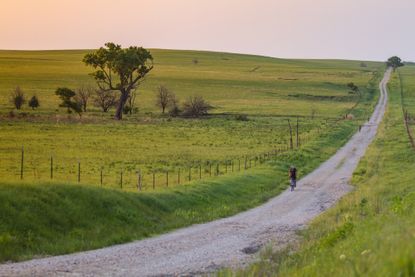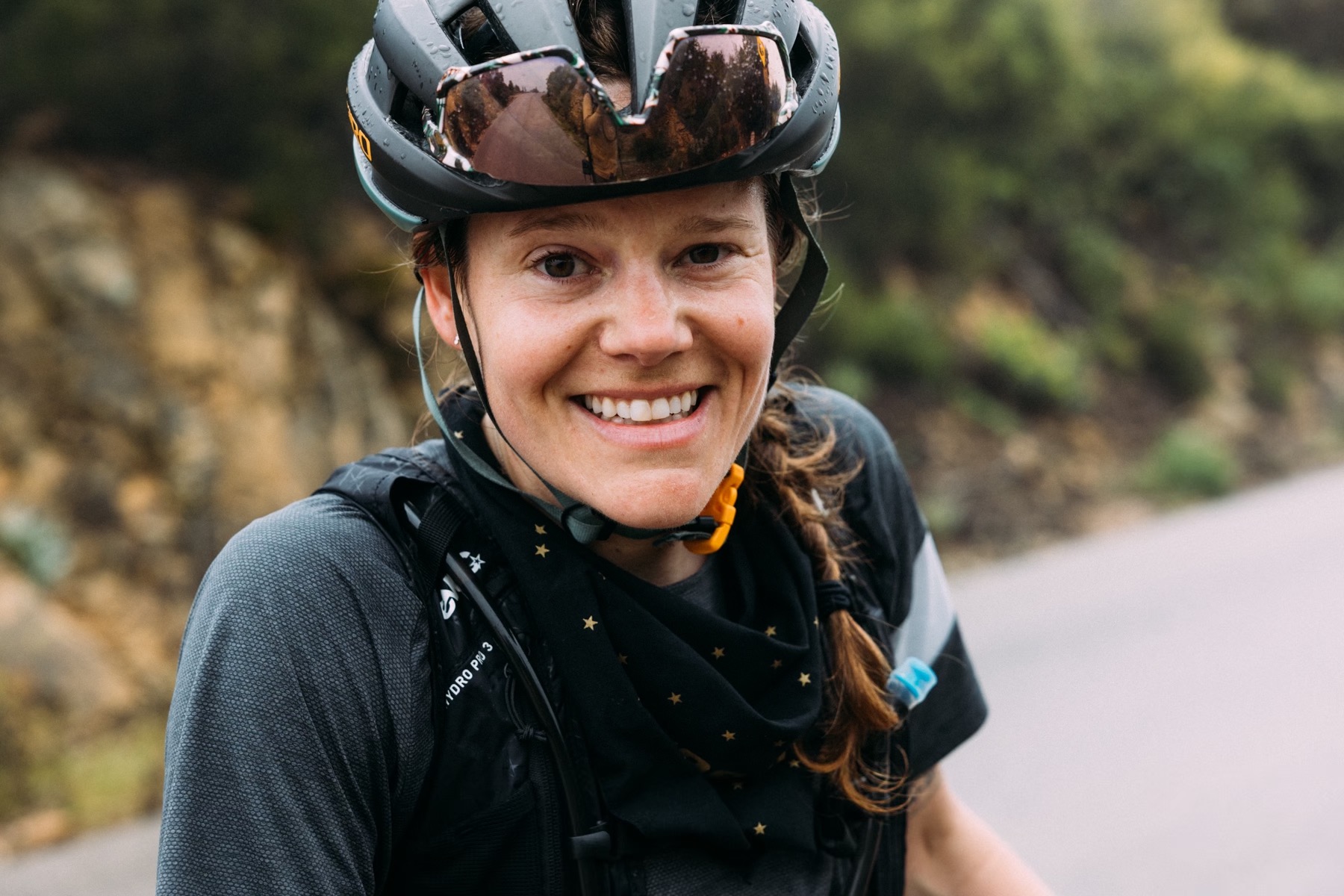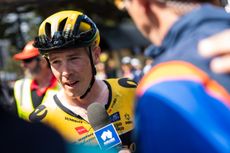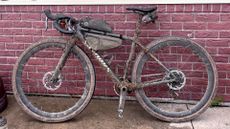Beyond Unbound: Gravel Kansas launches a statewide gravel cycling network of routes, free of startlines and entry fees
The network is meant to encourage people ‘to explore beyond the start lines and get back to those early days of gravel’


LeLan Dains ,former co-owner of the famed Unbound Gravel event, has long been on a mission to showcase the best riding Kansas has to offer.
"Gravel is not just what we have, I think it's the safest, most enjoyable way to ride a bike in North America," Dains tells Cycling Weekly.
The Emporia native has deep roots in the gravel scene and was instrumental in growing Unbound into the prestigious, world-class event it is today. But as gravel cycling becomes increasingly more professional and race-focused, Dains longs to rekindle the essence of the early days of gravel.
"My hope is to inspire people to explore beyond the start lines and get back to those early days of rounding up a small group of friends, picking a destination, and exploring not just the gravel routes but these amazing small towns with wonderful people," Dains says.
This desire lies at the heart of Gravel Kansas, a statewide route creation initiative led by Dains that empowers riders to explore the 98,000 miles of unpaved Kansas roads and the communities surrounding them.
This "ambitious project" has been in the works for years and was launched this fall with an initial catalog of nearly 80 routes spanning every corner of the Midwest state.
"This is about more than just unveiling new routes," Dains clarifies. "It's about showcasing a whole state of hidden gems, histories, quirks. It's about storytelling through cycling and reminding people that there's still exploration to be had – not only new gravel routes but new people to meet as well."
To make exploration easy for visitors and locals alike, Dains and a team of passionate route designers have curated all these routes into one centralized location.
The routes are hosted on People for Bikes' Ride Spot platform and categorized by region as well as a standardized difficulty rating.
"I think one thing we've done differently is that we were really intentional about standardizing our routes. So you'll see that they're categorized by green, blue, and black. So you know that a black route in one part of the state is going to be similar to an advanced route and another part," he explains.
And unlike Unbound's reputation for long, hard distances, Dains says that on Gravel Kansas, the black routes cap at 80 miles.
"At the end of the day, we want people to have enough time and energy to return to a community, spend some time and eat in the café or the brewery or stuff like that," he says.
Unique also is that each route offers an experience, be it a nod to a historical event, a geographical landmark, or a roadside attraction like Big Brutus, the colossal electric shovel.
Routing challenge: 98% of Kansas land is privately owned

Accessing the outdoors and creating routes is no easy feat in Kansas, where 98% of the land is privately owned.
"It's actually one of the things that makes recreation difficult throughout the Midwest is most of the land is agriculture, whether that be for crops or cattle," Dains explains.
Yet the two dozen route designers that contributed to the project worked hard to ensure that every one of Gravel Kansas' routes is held completely on public and accessible roads.
"When we were creating these routes, we were very adamant that route creators do not go on or through any private land, even if the landowner was agreeable," Dains shares. "We just didn't want to broach that because landowners can change their mind or land can change possession."
What made this extensive network possible, public right of way notwithstanding, is the community's support.
"All of these people, even if they weren't cyclists, understood the value that gravel cycling has as a tourism opportunity and wanted to contribute," says Dains. "In building this, I'm not looking for cyclists alone. I'm looking for storytellers. I'm looking for people who know their area and its stories and who can connect those stories to the gravel roads around them."
"I think some of the best routes hinge on those stories. Any cyclist can just go out and ride. We do that all the time. But what story are we telling? And I think that's one of the things that people will really enjoy, this learning about the area when they visit."
The Great Plains Route

Gravel Kansas isn't Dains' only project in the works. As Cycling Weekly reported back in November 2022, Dains is one of the designers of The Great Plains Route, a 4,000-mile curated route from the Mexican border to the Canadian border.
Opening in the spring of 2024, this epic challenge traverses the states of Texas, Oklahoma, Kansas, Nebraska and the Dakotas, and will inevitably become the home of FKT attempts.
"With the Great Plains route, we're creating an avenue and we can't wait to see how the endurance cycling community wants to activate on that. Selfishly, I'd love to see a [Tour Divide] style event on it," Dains admits.
Dains says he thinks FKT attempts and gravel races are "amazing," yet urges riders not to lose their sense of exploration and adventure.
"Not everything has to be a competition all the time," he says. "I want to make sure that gravel cycling holds on to some of that exploration mentality that we're just here to explore and discover something new, and not set a PR or see how fast we can go."
To discover Kansas in a non-competitive setting, be sure to check out Gravel Kansas' extensive route library at www.gravelks.com

Thank you for reading 20 articles this month* Join now for unlimited access
Enjoy your first month for just £1 / $1 / €1
*Read 5 free articles per month without a subscription

Join now for unlimited access
Try first month for just £1 / $1 / €1
Get The Leadout Newsletter
The latest race content, interviews, features, reviews and expert buying guides, direct to your inbox!

Cycling Weekly's North American Editor, Anne-Marije Rook is old school. She holds a degree in journalism and started out as a newspaper reporter — in print! She can even be seen bringing a pen and notepad to the press conference.
Originally from The Netherlands, she grew up a bike commuter and didn't find bike racing until her early twenties when living in Seattle, Washington. Strengthened by the many miles spent darting around Seattle's hilly streets on a steel single speed, Rook's progression in the sport was a quick one. As she competed at the elite level, her journalism career followed, and soon she became a full-time cycling journalist. She's now been a cycling journalist for 11 years.
-
 Rohan Dennis charged with causing death by dangerous driving following death of wife Melissa Hoskins - reports
Rohan Dennis charged with causing death by dangerous driving following death of wife Melissa Hoskins - reportsHoskins, the two-time Olympian, was killed in a car crash on Saturday
By Adam Becket Published
-
 GripGrab Women’s Windbuster Windproof Lightweight Vest review - minimalist design executed well
GripGrab Women’s Windbuster Windproof Lightweight Vest review - minimalist design executed wellA two-zipper and a mesh rear panel really help aid temperature regulation and work excellently with the front windshield
By Anna Marie Abram Published


